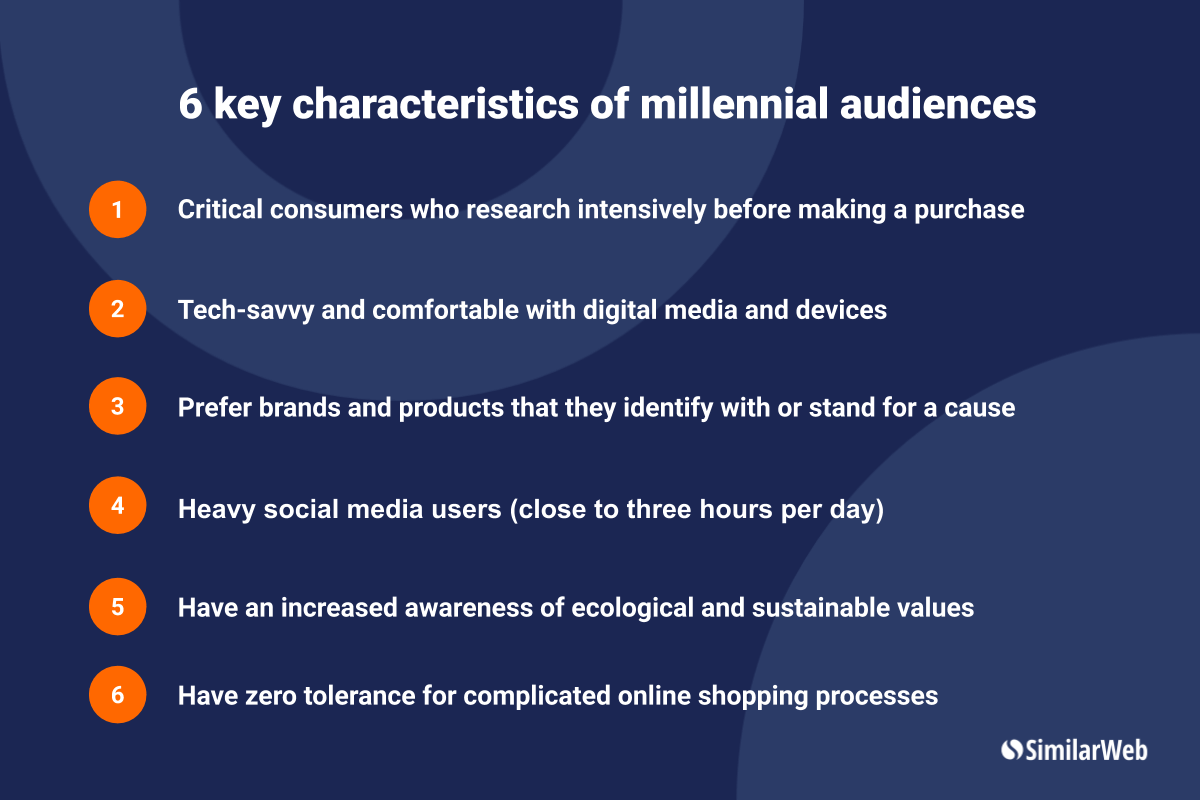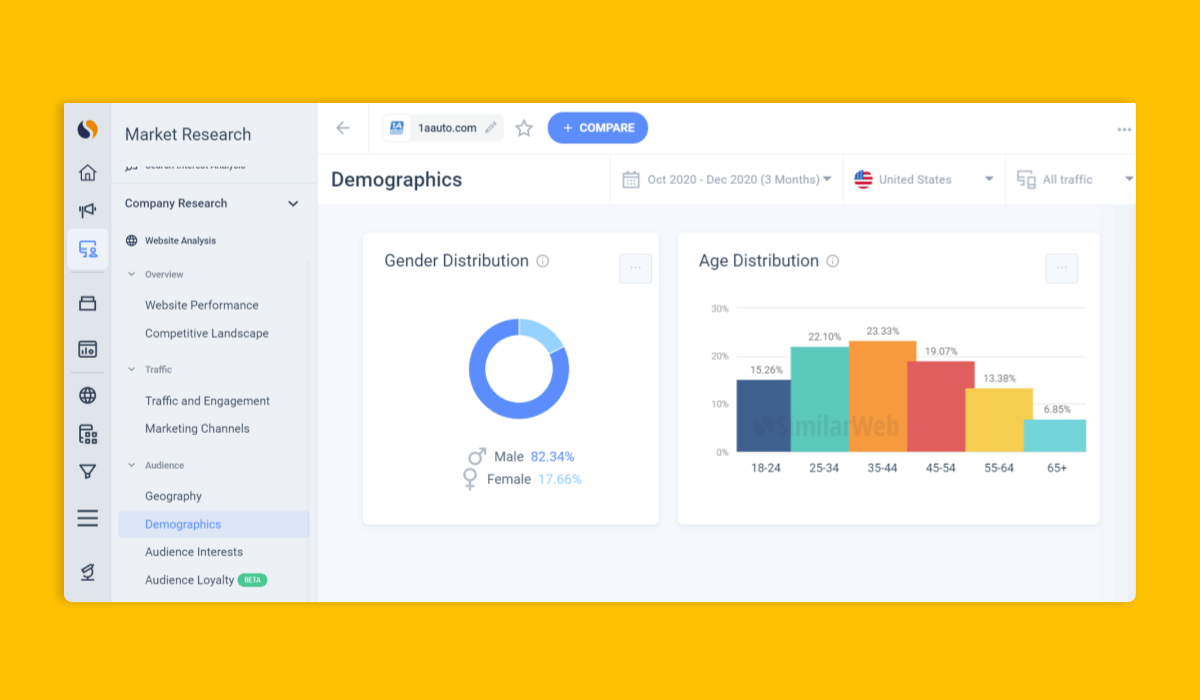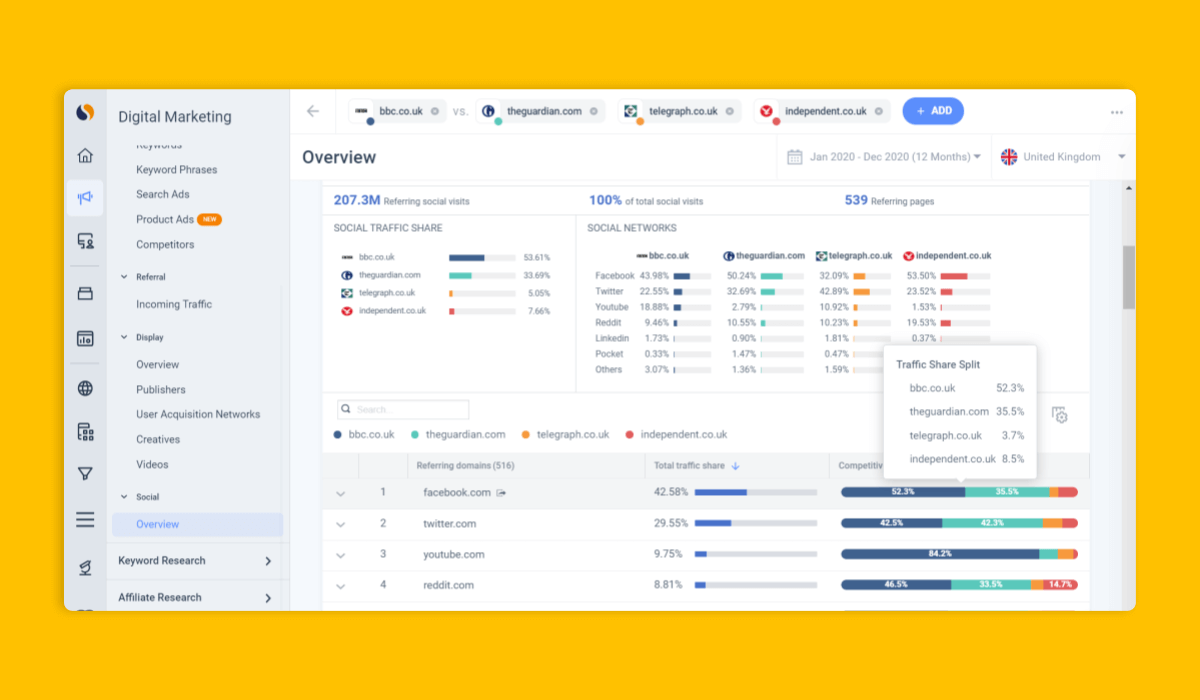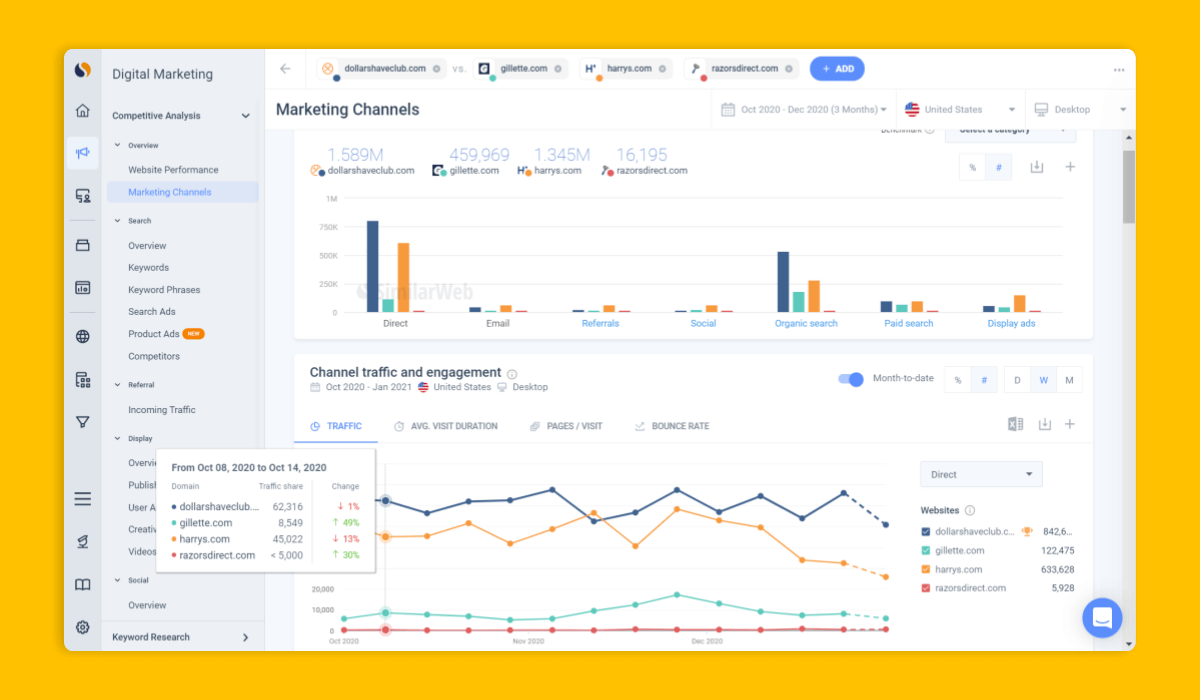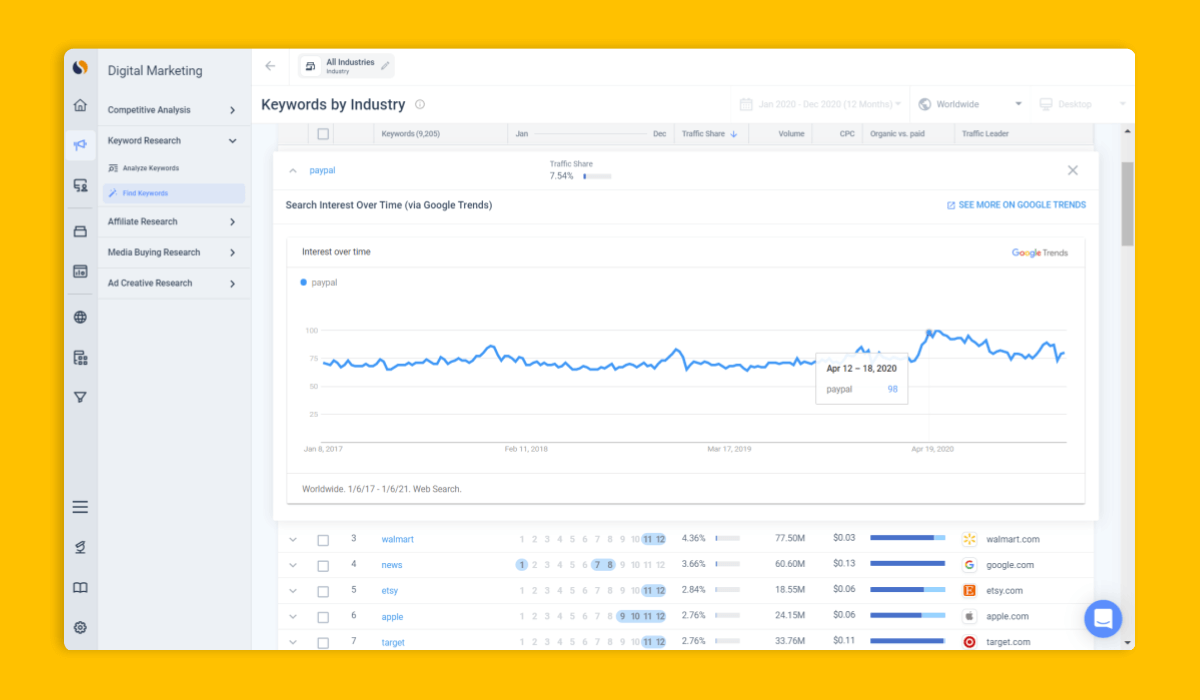The Ultimate Guide to Attract and Engage the Millennial Generation [8 Expert Tips]
![The Ultimate Guide to Attract and Engage the Millennial Generation [8 Expert Tips]](https://www.similarweb.com/blog/wp-content/uploads/2021/01/Thumbnail-Millennial-768x456.jpg)
They aren’t the nerdy spoiled teenagers who couldn’t be dragged away from their computer games anymore. Millennials have grown up to be responsible adults filling positions of decision-makers and innovators.
If, like me, you belong to this generation, some of what you’ll read here may seem trivial. Don’t get sniffy about it. But what appears evident from the inside can look quite different from another angle. An analytical view of actual website traffic data reveals eye-opening truths.
This article aims to widen your perspective. We’ll show you how to adopt a data-driven approach to better understand the millennial generation.
Our hands-on guide helps you overcome the challenges Generation Y consumer behavior presents to digital researchers and marketers.
What are millennials, and why are they important?
Who are we talking about when we say ‘millennials?’ This age group is also known as Generation Y and refers to anyone born after 1981 and before the millennium change; today, that includes anyone in the 20-40 age group.
Millennials make up 25% of the U.S. population. So, whatever age group your business targets, they are likely to be part of it. If not, they will become part of your target audience in the not-so-far future.
This generation is in the process of building their lives by starting a family, adopting a pet, having kids, and developing a career. Some are already settled and financially stable.
Millennials are a lot more mobile-oriented and digital natives than older generations, including Generation X’ers (40-50-year-olds) and Baby Boomers (55-75-year-olds), who were born into a world without the internet and digital communication.
In most industries and sectors, Generation Y’ers are a significant factor when it comes to purchasing power and making purchasing decisions.
Who are millennials?
Millennials grew up in a rapidly changing world. What was groundbreaking yesterday would become outdated tomorrow. Digital altered the concept of time and space by bridging distances and breaking boundaries. Our perception of what’s possible and what isn’t completely changed. It seems with digitally enhanced technologies, developing the right solution is just a matter of defining the particular problem.
As a result, the generation is far more tech-savvy than any previous generation and feels comfortable with digital media and devices. Studies show they stand out when it comes to adopting new, disruptive technologies, and tend to be heavy social media users. Their screen time on social platforms, such as Facebook, Twitter, LinkedIn, and Snapchat, ranges between two to three hours a day. No surprises here, yet.
But there’s something else that is easily overlooked by digital marketers. Values that apply to the digital sphere don’t necessarily hold in the natural world. Contrary to generations before them, millennials are highly eco-conscious and have an increased awareness of socially sustainable development causes.
While millennials have no problem with ultra-fast digital processes, when it comes to real-life changes, they want to see them happen in a controlled, planned, and conscious manner that promises sustainability.
This generation is concerned with lasting health, conservation of natural resources, striking a healthy work-life balance, and environmental protection. They are critical thinkers who will often put issues of social justice before financial gain.
Why millennial customers’ digital behavior is a challenge for marketers
Let’s translate this into purchasing behavior and preferences. We’ll start with the obvious: Millennial consumers have little tolerance for complicated digital processes. Buying online has to be quick, intuitive, and straightforward. If there’s any inconvenience, they expect a solution because that’s what digital is all about.
At the same time, they need a good reason besides the necessity to buy a specific product. Generation Y tends to purchase products that add to their social status. Consumers want a product or brand to stand for something and represent individual values they identify with.
That’s why these buyers compare and research products much more than previous consumers. Critical millennials do not trust aggressive advertising. They want to know the truth and will look up anything anyone ever said about you or your product. Consumer reviews are a huge factor in purchasing decisions for Generation Y’ers. In fact, according to a recent survey, 80% of shoppers compare prices online before making a purchase in a physical location. More specifically, 17% of respondents said that they typically compare the prices of multiple stores or businesses before completing a purchase.
8 tips on how to attract millennials and keep them engaged
Millennials spend a lot of time on content consumption related to products but little time on the purchase itself. How can you use millennials’ consumer behavior to your advantage? Here are eight tips that will help you reach and engage your millennial audience.
Tip #1: Know your audience
To figure out what your audience wants, you first need to know who they are. Measure website demographics to understand the age groups and the share of millennials on your website. Dig into additional demographic parameters to understand the type of visitor you attract to your site.
Compare demographics to similar websites and your competition. You can use Google Analytics for your basic traffic research and supplement it with Similarweb’s unique datasets.
Tip #2: Be mobile-friendly
Nielsen reports that 98% of millennials own and use a smartphone daily. A look at Similarweb’s data reveals that over 50% of online traffic worldwide happens on the mobile web.
Need we say more about the importance of being mobile-friendly? You get the picture.
Millennials value flexibility and connectivity, and they do things simultaneously on the go. The trend towards mobile can only be expected to grow, especially as Google plans to switch its indexing over to mobile-first indexing in March 2021. So start thinking mobile-first, if you aren’t already.
Tip #3: Socialize where it’s most effective
Generation Y is the first to socialize digitally. Millennials feel at home on social media platforms, and they typically engage on several. As a marketer, it’s easy to spread yourself thin, trying to reach maximum prospects. A more effective approach: identify your audience’s most popular social networks and learn how they prefer to engage.
Similarweb lets you evaluate the most beneficial social channels for your business. Uncover which generates the most traffic to websites similar to yours. Find out how much traffic is coming from social media over time.
Cross-reference with demographic data to see if you are attracting millennials with your social media marketing efforts. Compare with your competition and adjust, if necessary.
Tip #4: Create a diverse digital marketing strategy
A mobile-friendly website and continuous presence on social media are the foundation for your online visibility. It’s a good start, but not enough to attract and convince the highly versatile Generation Y.
Your marketing mix should include channels that work for your competitors and your industry. Try checking D2C brands for inspiration on how to communicate your products directly.
Also, remember, millennials like to purchase prominent brands that stand for something. See how others in the industry position themselves and add your own extra value. Leverage relevant niche channels, such as influencers or professional networks, then run inbound and outbound campaigns. Similarweb can help you find social media influencers to boost your brand recognition as well.
Find a way to incorporate email marketing as one of the supportive channels. Millennials are multi-taskers and read (or, more likely, skim through) emails on the go.
Tip #5: Invest in high-quality content
Now that we’ve gone over the ‘how’ to reach millennials let’s discuss what to publish. Always keep in mind the two guiding factors: time and value – or should we say no to time and yes to value.
Be creative, original, kind, and compelling in your marketing messages. Traditional ‘soap and dishwasher’ commercials won’t work with millennials. These consumers want to get a glimpse of what’s behind your brand and your product.
Tell them an authentic story that provides reliable data and information about your product or service, preferably by a real person. See how Dollar Shave Club used storytelling to catapult itself into a billion-dollar brand.
Stories also brought influencer marketing to life. Consumers will trust a real person when they vouch for something. It doesn’t have to be Kim Kardashian or Usain Bolt, but someone who’s trusted in your industry and can represent your brand’s values. A credible influencer can do a great deal in building, retaining, and engaging audiences.
Tip #6: Leverage reviews & other user-generated content
Engagement – a word we’ve neglected so far. Previous generations consumed content; for millennials, that’s not enough; they want to be active, and they want to engage with you.
You can use this to your advantage. Encourage feedback. Find the best way to incorporate user-generated content (UGC) such as reviews, surveys, comments, and ratings. These provide social proof of your reliability and quality. You will optimize your content and product listings and build trust. Starbucks is one brand that excelled in leveraging user-generated content effectively.
Tip #7: Stay on top of emerging trends
Fast changes are routine for tech-savvy millennials. Why stick with an item when there’s a newer, better version available? Just think of how frequently people change iPhones.
As a marketer, you can’t ignore market trends. If you do, you’ll fall behind. Keep your eyes on rising and falling trends and adapt your marketing content accordingly. Don’t run with anything for too long, and always anticipate what will engage your audience next.
To help you stay on top of emerging trends, Similarweb provides Google Trends data, which – together with our existing Search Interest Analysis tool – offers a holistic real-time view of what people are looking for. You can also investigate up to 18 months back.
Use this tool to see the differences between a range of geographies. Identify trending seasonal keywords to understand what topics are top of mind throughout the year and streamline your content and campaigns.
Tip #8: Be relevant and incorporate popular news events
The thirst for diversity can’t always be quenched by following the trends. Sometimes you need to dare and come up with something unique yourself. One way to do that is by picking out a current event that resonates with your audience and using it to leverage your campaign.
See this fantastic example of how Budweiser used Lionel Messi’s recent goal record to promote their beer. The brewer sent a few bottles of special edition beer to every goalkeeper sacked by the star. That in itself wasn’t a marketing campaign until the resulting photos of the goalies with the beer bottles went viral. What better promotion can a brand ask for?
One thing will not change quickly, and that’s the desire for high-quality – potentially viral – content. Vlogs and videos on TikTok and UGC video reviews can make a significant impact as well.
How can you make this work for you?
You are faced with a tremendous challenge. How can you always be excellent, fast, convenient, everywhere with everything without burning yourself out?
The only way to deal with millennial consumers’ unsparing demands is by understanding what precisely that means for your particular area of business. It’s not enough to look at the big picture. You need to deep-dive into the details.
Analyze how your audience engages with your brand. Where exactly, does your audience prefer to meet you? How do they reach your site? Then ask, is this good or bad or average? And how to improve?
Bottom line: You need data – detailed, reliable data about similar companies and competing businesses. Similarweb analytics delivers the most accurate data and useful metrics to answer your questions.
Learn how to use the data to understand your audience and expand your reach.
Download our all-inclusive playbook to learn how to understand your target audience!
Get to know your audience on a deeper level
Contact us to set up a call with a market research specialist
